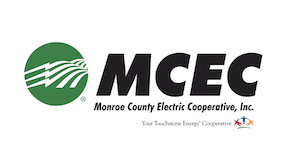WJHS talk continues
The future of Waterloo Junior High School was once again a large topic of discussion for the Waterloo School Board this month, though the board also saw a presentation regarding refinancing and approved a number of spending items throughout the district.
The meeting began just a few minutes after the scheduled start time of 7 p.m., with board members John Caupert and Nathan Mifflin absent.
Junior high talk came about during the monthly report from Waterloo Superintendent of Schools Brian Charron, who opened by addressing a previous question about the project regarding the possibility of having temporary buildings set up to serve as classroom space outside the facility.
Such a service, Charron said, would cost around $5,000-$6,000 and should include connecting these buildings to the necessary utilities.
In the previously reported debate about whether or not the district should construct an entire new building or conduct major renovations on the current aged structure, having exterior classrooms at an affordable rate would allow the district greater opportunity to perform renovations quickly rather than in a spaced out manner over several school years.
“If we chose to invest in the junior high, planning that renovation around when students are not there is going to be very complicated for us to do,” Charron said. “If we were to provide 12 temporary classrooms, which is what that rough estimate would provide, that would allow us to shut down sections of the building and allow the renovation project to be ongoing over a year, two years time.”
Charron further emphasized that expediting renovations would help reduce their cost as the work would be subject to less inflation if the project were to take place on a shorter timeline.
Board president Lori Dillenberger raised a point about bringing the public into the conversation to a greater extent, particularly via tours.
Board member Jodi Burton and others agreed, though Burton remarked that folks getting a tour of the basement would likely need to wear tall boots.
“Something that I would like to see us do is maybe hold some public forums to invite the public in and let them have some tours of the building, let them see what we saw on our tour, just the kind of shape the building is in, what it would require to renovate the building and see presentations from FGMA that we saw,” Dillenberger said. “Give the public the opportunity to weigh in on this decision. It’s a big decision for seven people.”
Charron went on to speak about various elements of the building’s disrepair, noting that at least some element of the previously discussed piping issue isn’t as bad as was once thought.
He noted that ceiling tiles saturated with water – rather than indicating a series of leaks – were actually damaged due to one leak in the pipe that traveled along the pipe’s length with the help of the surrounding insulation.
That pipe sealing repair is expected to cost roughly $45,000 and could solve the issue for anywhere from a few months to years.
With one junior high issue seemingly addressed, Charron reiterated that other major issues like the building’s heating and cooling systems remain.
He did voice his agreement with Dillenberger’s proposal.
“I’m certain that everyone will agree that something needs to happen,” Charron said. “Where we will not probably get agreement is what should happen. That’s gonna be the hard thing… As a reminder, the longer we delay that decision, the longer it takes to get that project started.”
Board vice president Neil Giffhorn raised concerns about the architect overview that was presented at a prior meeting, noting more information will be required regarding future costs.
Giffhorn specifically pointed out the need for more data regarding repair and maintenance expenses that a new building would require over the course of several decades, saying the board needs to be comparing “apples to apples.”
“It’s not just buying a new car, but it’s putting oil changes and the tires on it and all those other things that aren’t included in the sticker price,” Giffhorn said.
The junior high was discussed later in the meeting as the board approved emergency repairs to the building’s only elevator to the second floor.
Like the pipe issue, it was noted this $60,420 repair with Midwest Elevator addresses one of many issues facing the building.
Charron spoke further on the elevator, saying that the very slow elevator would be made three times faster – though still quite slow – and would have a battery backup, preventing any disastrous scenario of someone getting stuck between floors during an emergency.
Other action items addressed by the board included a contract with Southern Bus & Mobility for no more than $93,568 for a 2025 Chevrolet Trans Tech 14 passenger bus and fees.
The need for an additional activity bus for the district’s fleet was previously discussed given some of the buses are still serviceable but are likely not reliable enough for longer distances.
Also approved was a contract with United Rentals for no more than $17, 887.50 for a 2025 Skyjack scissor lift, a replacement for the district’s current 16-17-year-old scissor lift which has not met inspection requirements.
Additionally, the board approved two project authorizations with FGM Architects for roof replacement for Rogers Elementary and partial roof repairs for the Waterloo High School auxiliary gym.
Regarding the high school gym, Charron noted that mold issues in the gym’s roof were previously addressed, but the issue has returned thus prompting a need for repairs.
At Rogers, it was acknowledged that the aging roof has encountered some shingle loss during severe weather. Metal shingles would be used for the replacement.
As Charron explained following the meeting, FGMA will be assessing the scope of the projects which will be put out for bid at a future board meeting.
Other action items approved were the Waterloo High School Course Selection Guide for the 2025-2026 school year as well as extra-duty assignments for the school year, the latter of which Giffhorn abstained from voting on.
The lengthiest presentation for the board came from Stephen Adams with PMA Financial Network, who presented to the board as a municipal advisor.
He essentially spoke about the board’s potential for refinancing its debt still left from the construction of the current high school building, offering his services to help oversee an underwriter involved in the refinancing process.
During and after Adams’ presentation, Charron remarked on how he and his office were previously in charge of overseeing a refinancing process, advising that someone else in the field see to it this time around.
Charron also spoke generally in favor of the savings refinancing could provide for the community.
“When the board made this decision back in 2017, we ended up saving taxpayers $1.4 million on the payback at that time,” Charron said. “If we had stuck with the old payback schedule for the loans, we’d be paying $1.4 million more than following this one. Now there’s an opportunity to save over a million dollars again… This is the debt way have that taxpayers are repaying.”
This month’s presentation from the Waterloo Classroom Teachers Association took the form of a video covering all the ins and outs of a day in first grade at Zahnow Elementary School.






